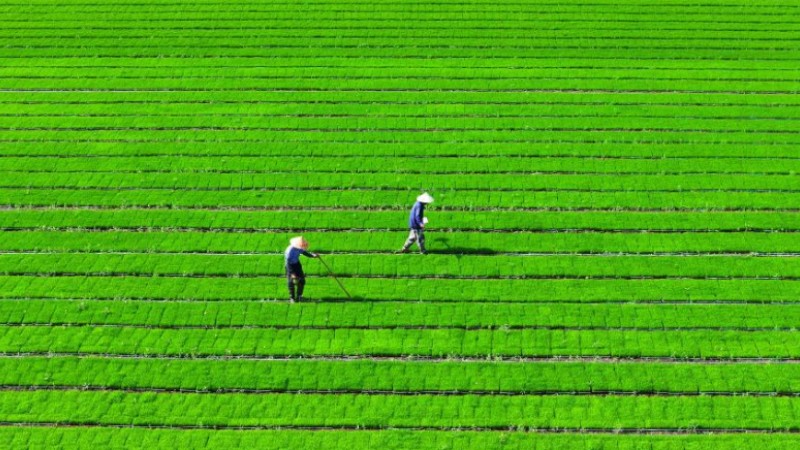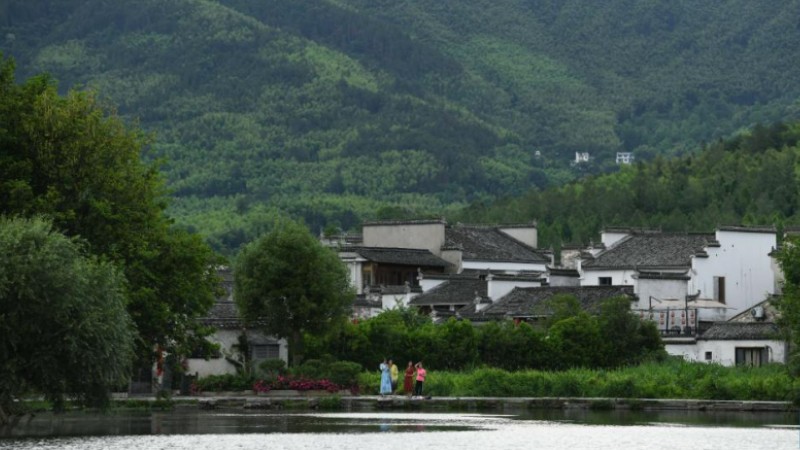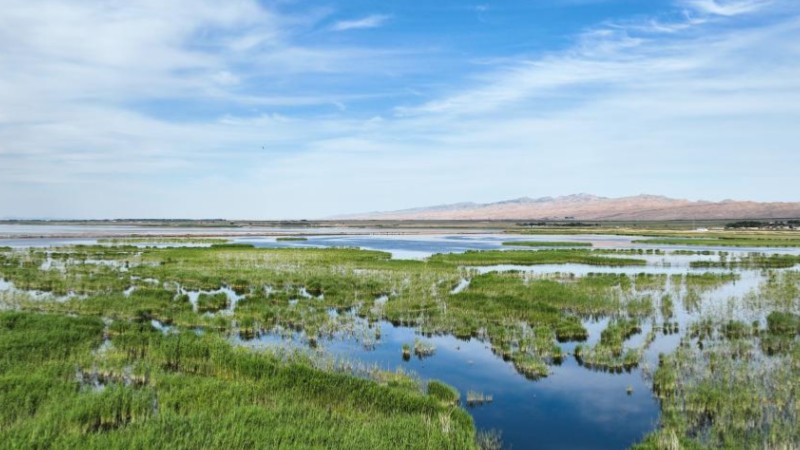Green development presents bright prospects for Inner Mongolia
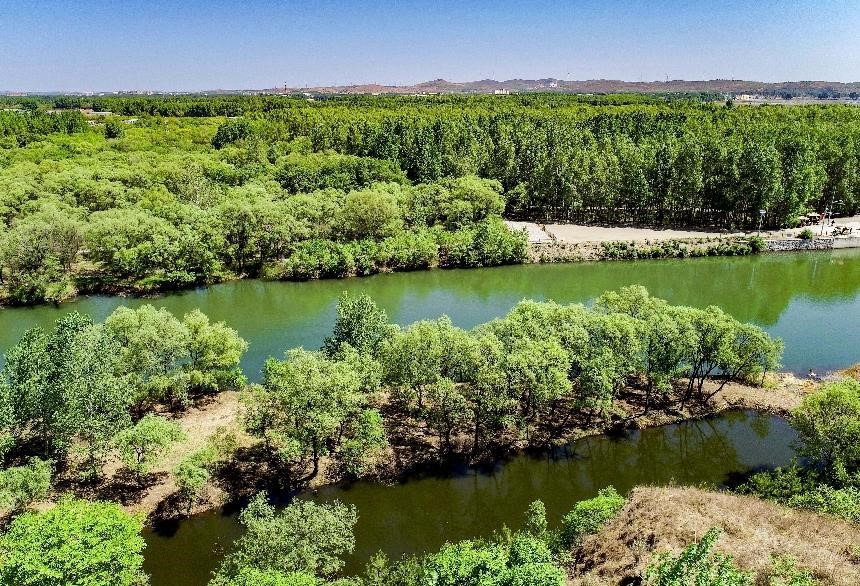
Photo taken on May 21, 2023 shows a beautiful view in a national wetland park in Ulanhot, north China's Inner Mongolia autonomous region. (People's Daily Online/Wang Zheng)
Eco-environmental conservation and green development have gained traction in north China's Inner Mongolia autonomous region over recent years.
Grassland is under great natural regeneration thanks to a subsidizing policy aiming at ecological protection, which has been implemented for a dozen years.
Commercial logging is banned. Therefore, its Daxing'anling forest area, the largest state-owned forest area in China, is free from lumbering activities.
The Kubuqi Desert in Inner Mongolia has turned green today and is listed as a model of desert control by the United Nations, and the water coverage of the autonomous region's Hulun Lake, Ulan Suhai Lake and Daihai Lake remains stable due to comprehensive management.
Green is a defining feature of Inner Mongolia's development. Ecological conservation is an obligation of the autonomous region that generates infinite power for its development.

Photo taken on May 23, 2023 shows a wind-solar hybrid plant in Ulanhot, north China's Inner Mongolia autonomous region. (People's Daily Online/Wang Zheng)
As an important source of energy and strategic resources for China, Inner Mongolia is brimming with vitality.
It ranks first in the country in terms of total installed capacities of power and new energy. Making use of its advantages to achieve higher development efficiency, the autonomous region boasts a strong modern energy economy.
Inner Mongolia has made remarkable progress in the development of wind and photovoltaic power generation, transforming from a major producer of fossil energy to one that focuses on new energy.
Last year, it proposed to raise the proportion of the total capacity of renewable energy generation to around 40 percent. Besides, the installed capacity of new energy power is expected to outrun that of thermal power in the autonomous region by 2025.
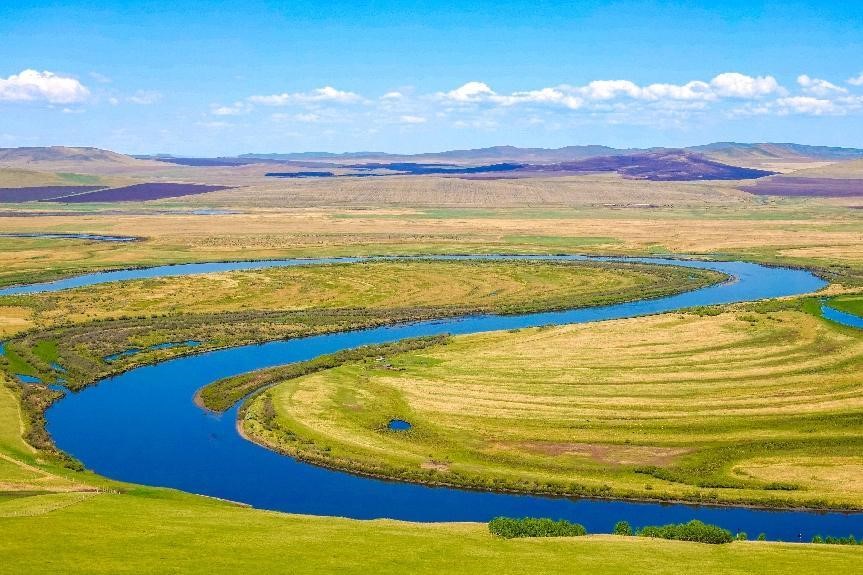
Photo taken on May 30, 2023 shows the beautiful Hulunbuir grassland in north China's Inner Mongolia autonomous region. (People's Daily Online/Lyu Haojun)
Inner Mongolia is a national-level production base of agricultural and livestock products. It pursues high-quality development of agriculture and animal husbandry, and develops the two sectors in line with specific conditions.
Over recent years, its consumption of chemical fertilizers and pesticides has turned to constant negative growth, while the region has witnessed a continuous rise in the comprehensive utilization of straws and animal waste, as well as the recycling of mulching film. Inner Mongolia now boasts a higher capability in the supply of green and quality products, including grains, edible oil, coarse cereals, dairy products, beef and mutton.
To work for a beautiful China, Inner Mongolia has designated over half of its land area as ecological protection red-line zones and 70 percent as ecological spaces. It is not a restriction for its development, but mirrors the autonomous region's firm determination to build a modern industrial system with green features, establish a hub of the new energy industry, and achieve the carbon peaking and carbon neutrality goals.
Giving full play to its advantages, Inner Mongolia autonomous region is striving with sound momentum for a comprehensive green transition in production and lifestyles and laying a solid foundation for future development.
Photos
Related Stories
- In pics: Sanshenggong Water Control Project in N China
- Magnificent scenery of greening grasslands in Hulun Buir, N China's Inner Mongolia
- Aerial view of Ulan Suhai Lake in China's Inner Mongolia
- Toothbrush manufacturers in E China score big in green transition
- Horses gallop on grassland in Inner Mongolia
Copyright © 2023 People's Daily Online. All Rights Reserved.






